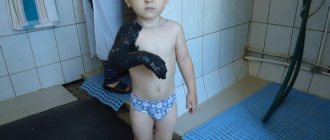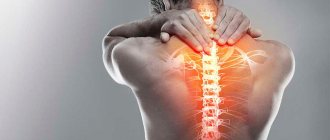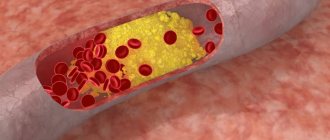Paresis is an acquired or congenital defect of the nervous system.
Due to damage to the brain or spinal cord, a person is limited in professional and everyday activities. The main prerequisites for the appearance and transformation of paresis are hemorrhage or ischemia of the vessels of the spinal cord and brain. Limb paresis is a progressive, long-term disease. Without adequate treatment, it can result in serious complications, including complete loss of the ability to move. Therefore, it is important to contact a specialized clinic as soon as possible, identify paresis and treat it correctly.
Causes of paresis.
There are 2 types of neurophysical specific manifestations: organic and functional. With paresis of an organic nature, the physical relationship between the muscles and the brain is broken, which reduces the mobility of the limbs. For functional paresis, a distinctive feature is the identified destruction of the gray matter substance.
Depending on the area of influence and severity of the disease, they are classified by type of localization:
Tetraparesis: leads to weakening of muscles. It is expressed by increased tone, as a result of which the patient cannot move.
The formation of this type can be facilitated by chronic diseases, circulatory disorders, and the presence of injuries after neurosurgical treatment.
Weakening of all limbs occurs due to deterioration of the blood supply to the nerve fibers. Sometimes there is a deterioration in metabolism in the neural pathways of the gray matter.
Paraparesis: Affects the arms or legs on both sides of the body simultaneously, affecting the brain. It is provoked by tumors: they are also derivatives of osteochondrosis and spondylosis.
Hemiparesis: In this type, only half of the body fails. Then the power decreases: a defect in the muscles of the upper and lower extremities takes its place.
Hemiparesis tends to increase under the influence of diseases such as hemorrhage, tumor, head injury, and diabetic encephalopathy.
Monoparesis: with this disorder, attenuation of muscle activity in one of the limbs occurs. A similar type of disorder is caused by Brown-Séquard syndrome.
The causes of destruction of this type are inflammation of intracranial substances, botulinum toxin poisoning, damage to the skull, spine, abscess, stroke.
Prevention
In order to prevent this dangerous disease, it is necessary to adhere to certain preventive measures.
Otitis is the main disease that leads to paresis of the facial nerve (in about three percent of all cases after acute otitis). Chronic otitis media promises the onset of paresis in five percent of cases.
Another important factor influencing the appearance of paresis is the course of pregnancy.
Since this disease can arise as a result of completely ridiculous accidents, mothers and doctors should be extremely careful while carrying a child and during the birth process.
In general, doctors recommend avoiding hypothermia, as well as promptly treating colds and ear infections.
Paresis of the feet.
Appears when trying to bend the knee. Difficulties in the flexion-extension functions of the femur and lower leg are visible to the naked eye. This is due to the weakness of certain muscle groups with normal dynamics in the distal sections. Traumatic factors affecting the integrity of the thigh fibers often cause peripheral proximal unilateral paresis.
With mononeuropathy of the femoral nerves, there may be a loss of sensation on the outer surfaces of the leg, as well as the front of the lower leg. The muscles become very tense, which limits their mobility. Extension of the lower leg is difficult.
As this type of paresis progresses, the personal or tibial muscle group is affected. It is impossible to move the foot, and after peroneal nerve dysfunction it is difficult to walk. By stepping on the heel, the patient is deprived of the ability to abduct the foot and raise its outer edge. The acuity of sensory perception on the inner side decreases. Due to the lack of timely qualified treatment, a “cock gait” develops.
Serious traumatic consequences can lead to significant problems in relation to the tibial nerve. Symptoms include difficulty flexing the sole, foot and hand. A person cannot stand on his toes; the Achilles reflex disappears. As paresis progresses, trophic ulcers may appear. Sensory sensitivity is also impaired in the plantar part, as well as in the area of the outer edge of the sole.
Sciatic nerve disease is often the result of injury. If the area and depth of the damage is large, then it is difficult to avoid loss of the hip bone. As a result of destruction, mononeuropathy of the sciatic nerve progresses. With complete loss of nerve fiber endings, absolute immobility can occur. However, the outer femoral surface remains intact and sensitive. The ability to perceive tactile stimuli on the back surface, as well as the sole, is significantly reduced.
Clinical picture of arm paralysis.
As paresis deepens, the variability and dynamic level of motor activity decreases, which is easily determined by a simple handshake. Often, a violation of muscle motility manifests itself without any specific underlying causes. The acute course of the disease signals trouble with a pronounced pain syndrome. Diseases in which nerve fibers rupture are often the result of a traumatic complication.
Failure in the distal region is called “Dejerine-Klumpke palsy.” Questions of this kind may arise due to injury to the child’s shoulder joint at the time of birth. With such stress, immobilization extends to the hands. The victim is unable to clench his fist normally, fold and open his palm, because... small soft structures of the hand disintegrate.
In case of paresis due to rupture of the ulnar fibers, acute pain in the muscles involved in straightening the hand and abduction towards the elbow is disturbed, and performance is lost. The little finger is immobilized.
If treatment is not timely, this can lead to atrophy and hypothenar.
In appearance, the hand resembles a clawed paw. In the main phalanges, the fingers are in an extended state, and in others they are bent; the paralyzed muscles dominate.
The manifestation of the disease is accompanied by a pronounced progression of polyneuropathy (nerve damage).
Complications of pathology
No matter how well the course of treatment is carried out, there is always the possibility of complications. They can be of varying degrees of severity, but are always of particular importance to the patient.
Most often, so-called synkinesis . This phenomenon means paralysis of the facial muscles responsible for facial expressions.
Neurologists say that this disease can befall a patient if improvements after treatment for facial paresis do not occur within four to six weeks after the end of the course.
However, in this case, as in a number of others, one of the main factors for a successful outcome is the timely application of the patient for medical help.
Diagnosis of paresis.
If symptoms appear that even remotely resemble paresis of the upper or lower extremities, only a specialist with extensive clinical experience can help.
The study may consist of collecting anamnesis and establishing a tendency to certain psychogenic reactions.
During the period of diagnosing the disease, the patient needs to answer the questions: how long ago did he first feel a narrowing of physical capabilities, does he have a history of benign or malignant brain tumors, purulent abscesses, poisoning (or a similar picture occurred in any of the close family members) .
An examination is required in which it is possible to find out the number of points scored during the assessment of muscle quality (0 - 3 points means strength is below normal).
To detect possible inflammation, an additional general blood test is performed. To compile an anamnesis, the sick person receives a referral for toxicological analysis. It is important to evaluate electrical activity: for this, the doctor prescribes electroencephalography. To study the structures in detail, identify the specifics of diseases, and also determine the presence of abscesses, hemorrhages, neoplasms of various etiologies, you need to undergo computed tomography and magnetic resonance imaging and start normal treatment.
Diagnostic techniques
In order to diagnose facial nerve paresis, it is necessary to undergo a series of studies. Now there are several of the most modern and accurate methods, which include :
- neurological research;
- MRI of the brain, which is performed to exclude the possibility of other diseases;
- a banal appointment with an ophthalmologist and examination of the auditory canals;
- The most accurate diagnostic method today is electroneuromyography, which can reveal not only the presence of the disease, but also the degree of destruction of the facial nerve.
Osteopathic methods.
Osteopathy views the body as an integral system capable of self-regulation and self-healing.
The healer’s task is to launch a mechanism that activates hidden reserves.
Due to the pronounced regression of paresis, all methods of osteopathy are involved in correction and treatment.
Structural:
the doctor uses it if there are issues related to the bones and ligamentous system. An osteopath uses various techniques that are similar to manual therapy.
Fascial:
works with soft tissues of the extremities. The organs affected by the pathology are restored through their synchronization, and blood flow improves.
Craniosacral:
harmonizes impulses of the brain and spinal cord in accordance with the biological rhythm. Used in the regulation of neurophysiological problems of the limbs.
Regenerative gymnastics.
An auxiliary section of the osteopathic method is physical therapy. It is indicated for any severity of paresis (even if the symptoms are such that the muscle problem prevents normal movement).
Exercises support the functioning of the vestibular apparatus, heart, blood vessels, normalize the musculoskeletal system, tendon-ligament structures, and joints.
It is important for the doctor to select a set of exercises to simultaneously use both arms and legs. It makes no difference whether the stiffness is unilateral or bilateral.
An osteopathic doctor selects the most effective methods of treatment, both modern and ancient. To formulate a more extended recovery course, it is necessary to keep in mind different approaches. Acupuncture – acupuncture therapy; Su Jok (translated as “hand and foot”) is a technique for influencing reflex zones; taping – fixation of joints using special plasters (kinesio tapes are used – a plastic material for joint regeneration, allowing flexion and extension of fixed joints).
Massage.
Massage is an auxiliary conservative osteopathic treatment that provides restorative measures by influencing organs through the surface of the body. With the help of special manipulations, it is possible to normalize the blood supply to cells and alleviate the condition of spasms. The person feels better. The procedure performed by an experienced specialist prevents degenerative-dystrophic prospects. To maximize the effect of the manipulations, sometimes additional vitamin preparations are prescribed.
Treatment is carried out in courses. Massage is performed on both sides - the healthy one and the one that needs to be treated. The specialist gently massages each one from bottom to top.
A person suffering from this disorder can independently relax the spasming muscles. These skills can be learned in the clinic.
To reduce muscle spasms, you need to gently roll the roller with your foot. Gentle movements will help relieve symptoms. The amplitude needs to be increased little by little.
It is important to take into account that in this case the treatment is carried out comprehensively with the use of reserve reserves of the whole organism.
It is a mistake to limit yourself to just massage or sports without the supervision of a doctor: you still won’t be able to get the expected therapeutic effect.









